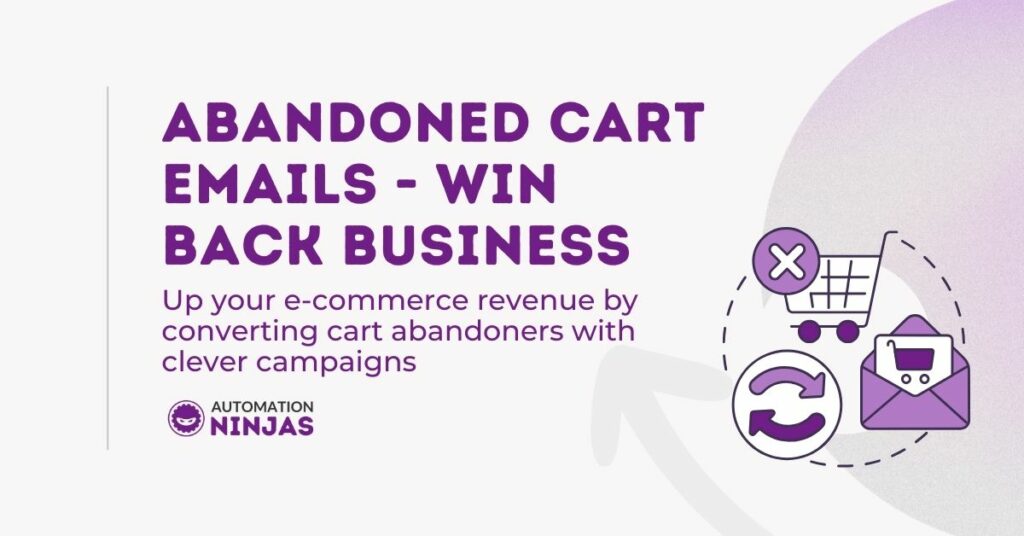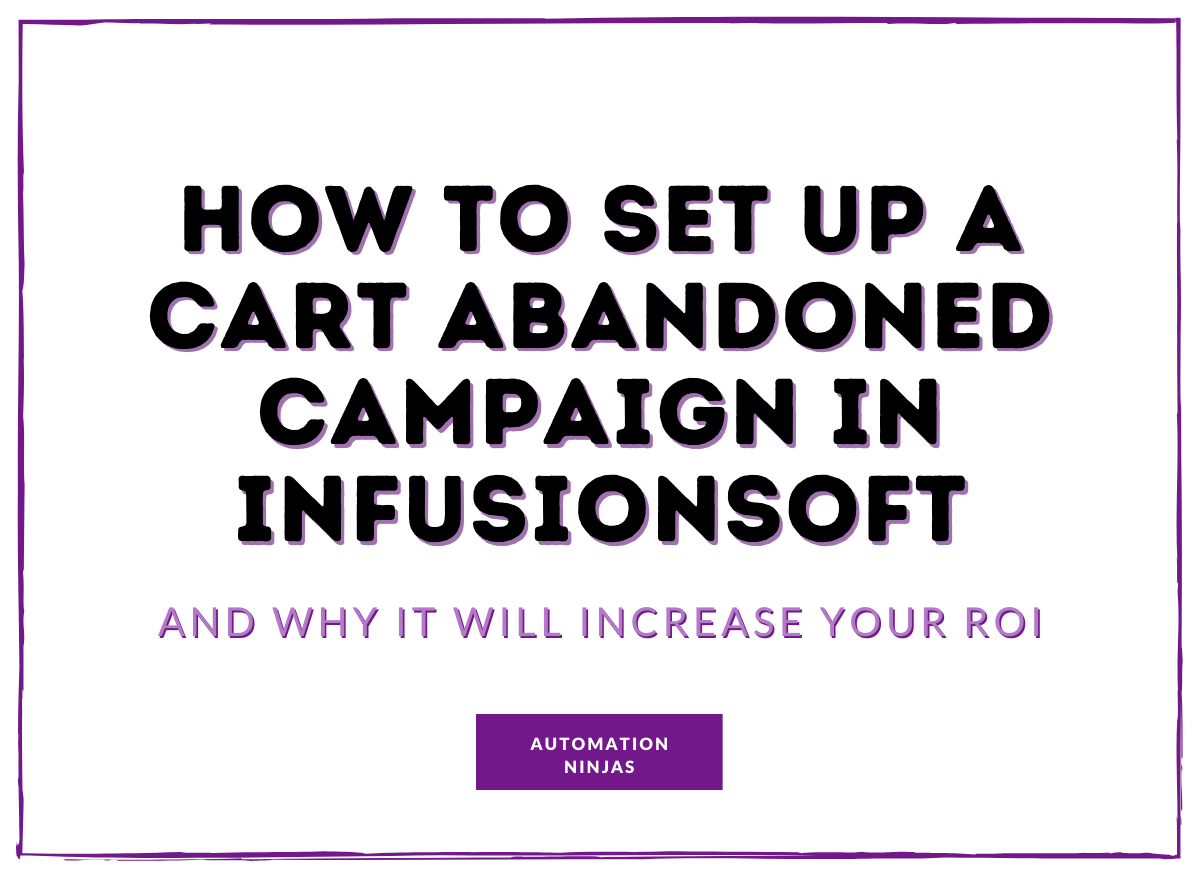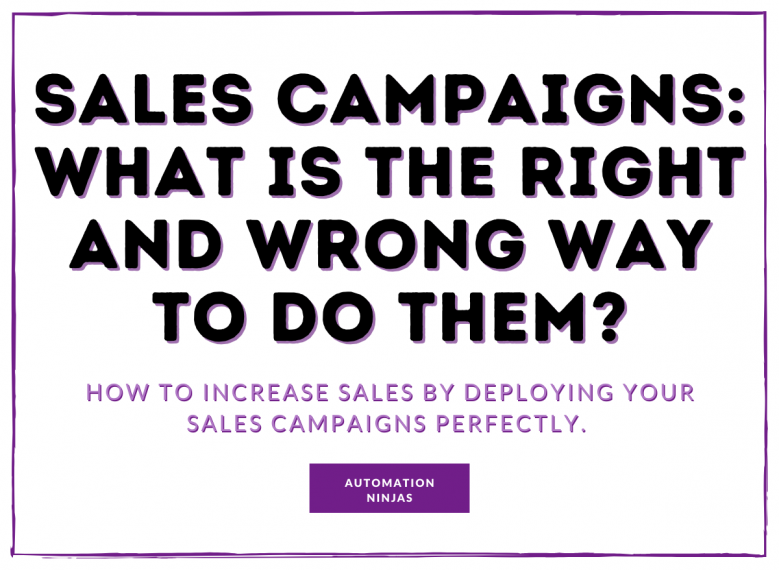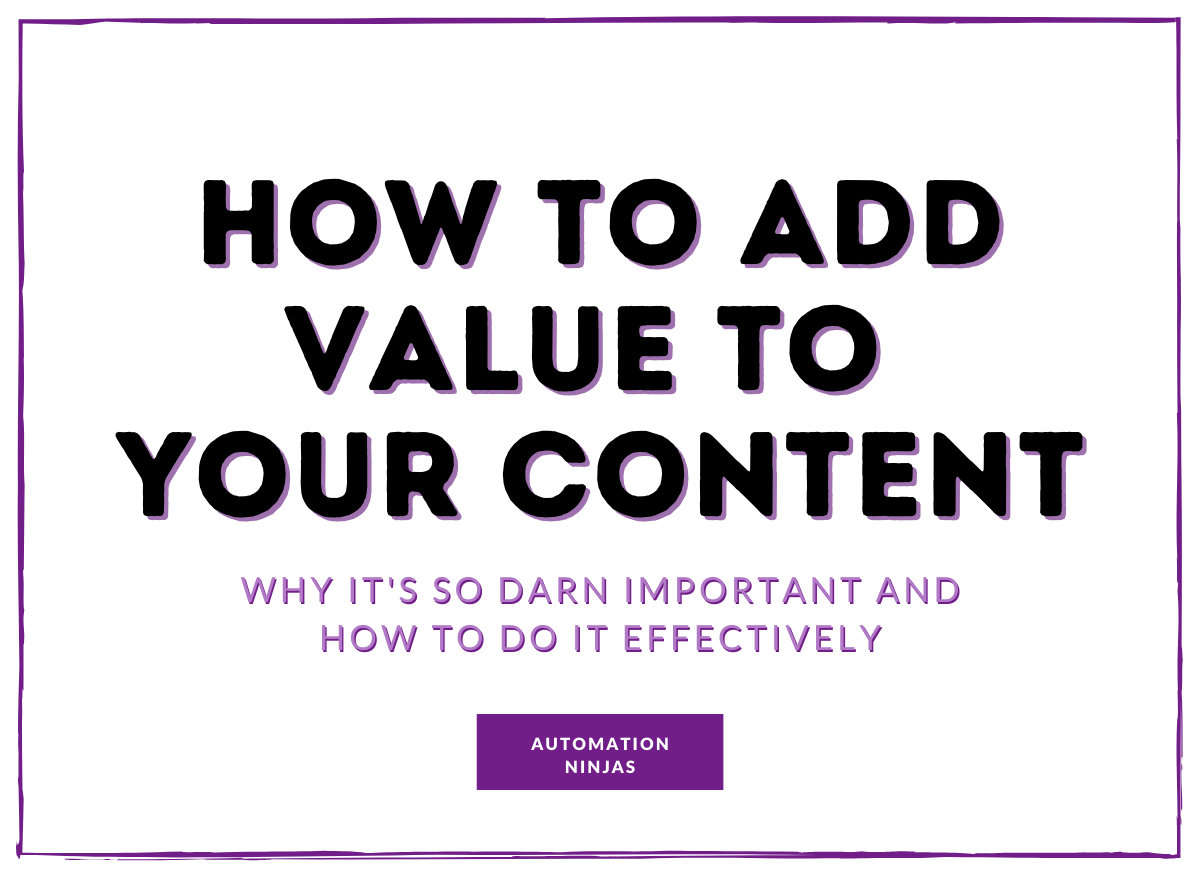Author: Ashton Oldham
Hey there, I'm Ashton, the Content Ninja with a penchant for creativity! I'm all about crafting killer customer-focused content and sprinkling it with that special sauce that makes brands pop. Teaching, strategising, organising (people and projects), and spicing up collaborations? That's my jam!
Are you an eCommerce business? If so, you must be sending abandoned cart emails. Unless you enjoy seeing your potential profits dissipate into nothingness? I didn't think so!
Cart abandonment is a popular practice for online shoppers. And, I’m sure you’re guilty of dumping purchases like a true player at least once or twice.
I am often quite partial to dream shopping. Piling wonderful things I don’t really need (but would really like) into my basket just to simply leave the website, with my bank balance intact.
Occasionally, I will add to cart because I genuinely have a need for said items. But, like many, I like to ensure I’m getting the best value before I hit that complete the sale button.
Sometimes I abandon simply due to the undisclosed T&Cs, or added costs, that suddenly get bomb-dropped on me when I go to check out. That’s a real good way to get someone's back up.
Thanks to some excellent research by Baymard Institute, we know that the average online shopping cart abandonment rate is 69.82%, with mobile users even higher at 85.65%. To paint that picture a little clearer, for every 100 people that shop on your e-commerce site, a whopping 70 of them will hotfoot it out of there without completing a purchase.
Here’s a nice graph from Baymard showcasing the reasons why people abandon their carts:
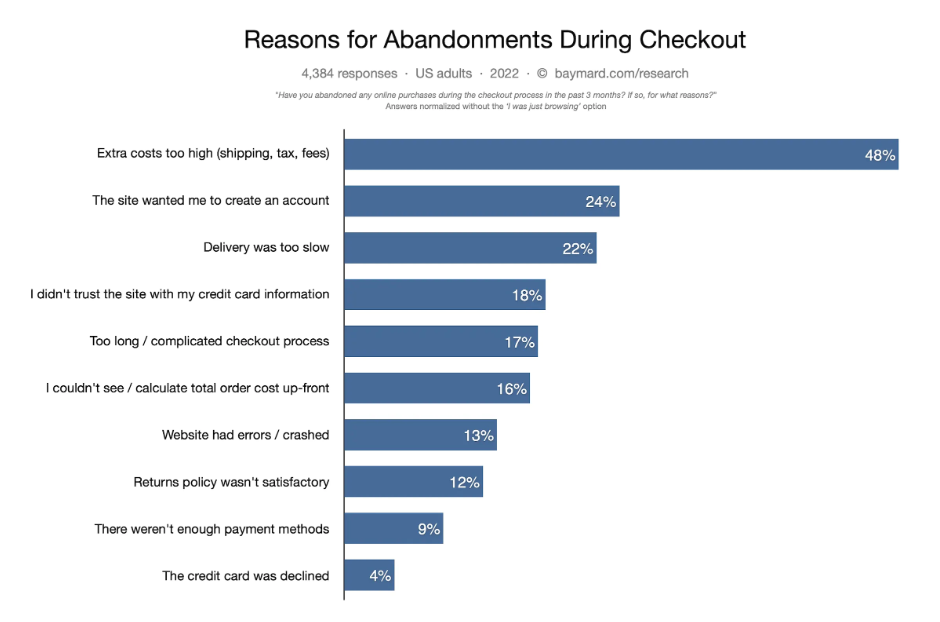
The good news is that by sending abandoned cart emails, it’s possible to claw back a decent percentage of that loss. In fact, 28.3% of online sales revenue is generated from successful abandoned cart recovery emails.
Are you ready to find out how to create effective abandoned cart emails? Let’s go!
How to Create Abandoned Cart Emails - Step by Step
Before we jump in, I’ve got an important prerequisite for you: you can’t send abandoned cart emails if you don’t have their email address.
I know, if only we could sprinkle some magic upon this and remove that little blocker. But alas, we cannot. However, there are things you can do to increase the chance of someone providing an email address, or even creating an account with you prior to them scarpering from your site.
Why not use website pop-ups? You can customise these in a variety of ways - for coupons (discounts), prizes, competitions, newsletters and blogs, community membership etc. Of course, some will be more effective than others, and yes coupons are generally the leader here.
It’s all about incentivising your prospects to provide their contact info. You have to offer something they see value in and it should be easy for them to do. No long-ass forms here, all you need is a first name and an email address.
If they choose to abandon their cart and you have them linked to an email they have provided, BAM! Hit them with a campaign that knocks their socks off and gets them back in the buying process.
Now, on to what you need to do to build that awesome campaign.
Step 1: Build out the campaign structure
It’s a good idea to get everything in place in your Marketing Automation platform, so you're ready to pop your content into it once created.
As you've probably guessed, you cannot do cart abandonment easily without automation. Have you got a bunch of squirrels on payroll ready to manually email every single cart abandoner? Unless you are Willy Wonka, I highly doubt that’s the case.
PS. Your marketing automation platform must also work with your e-commerce platform. Otherwise, you may find it far more faffy to get your campaign firing on all cylinders.
With that campaign structure comes the importance of trigger tags. You need to link your e-commerce site to your campaign so it tells it when to fire off the first email.
You should also use tags to inform whether the next email in the series needs to be sent. After all, the first email may in fact cause the prospect to complete the purchase. But if not, your automation needs to know to send the next, and the next… you get the idea.
Once you have all that set up, it’s time to get writing!

Step 2: Create the content for your abandoned cart emails
Ok drama llama. Yes, copywriting can be a toughie, and as you can imagine it is a pretty mega step.
However, I have good news - there is a core strategy behind creating effective abandoned cart emails. And, I'm going break it down into sizeable chunks.
Use clever subject lines
You want people to open the emails, if they don’t open they won’t consume the content and won’t be inclined to click. It’s the first hurdle. But, with an enticing and persuasive subject line, you should pique their interest enough to get their attention.
Here are some examples of common cart abandonment email subject lines:
- Did you forget something <firstname>? - so simple, yet it works, the personalisation of including their first name gives it a little extra too!
- You left something behind <firstname> - similar to the one above, but it’s less of a question, after all when you ask a question the answer could be no…
- Get 10% off [Product] if you buy today - an incentivised subject line. You are offering them money off if they purchase, and ‘today’ puts a limited time on the offer and FOMO.
- Free shipping on [Product] for 1 hour only - another incentive, especially if you can track that it was at the point of selecting shipping costs that perhaps caused the abandonment.
- Just dropped! We’ve reduced the price of something in your cart - this is an intriguing incentive, you’re not making it clear what’s reduced or by how much.
- Oh no! Only [Number] [Product] left in your size - Don’t miss out - this is a clear FOMO subject line but it will only work for lower stock levels, effective though.
- Last chance to buy - you’ve probably seen this a lot. FOMO at its best, but it needs to be real. I hate when businesses say that, but really it’s not the last chance. Don’t tell fibs, most shoppers are savvy enough to see through it and it will dampen your brand name.
- You’re so close <firstname> - I know this one is commonly used as it is, but I feel it could be stronger if you told them what they were close to. Pushing on something they would consider a benefit or desire. Of course, it would need to be specific to the item/s that they were going to purchase, which may be easier for some industries than others.
Get experimental...
Here at Ninjas HQ, we aren’t only about the obvious subject lines. The FOMO, the incentives - they are all good, but you can still showcase the value of a product without them.
Focusing on the pain points of your prospects, their wants, needs, desires and values can also be effective. If you talk to them as a person and be relatable and persuasive you can often win them over just by acknowledging the things they care about.
This is something to consider with your subject lines and of course your email content.
Include product information
You’ve got to remind them of what they’ve left behind; give them an immediate jog to the memory. Of course, including a picture is the best way to do this.
Also, you don’t want to just mention the product/s. You want to showcase the awesomeness of it. Put a few key specifications or features that make it stand out. Then, you need to explain the benefits.
How is the product going to change their lives? I know this can seem a little much, especially for things like clothing, but trust me, it works.
One of our clients is a clothing retailer, and we always push the benefits of the products that are promoted in the email. We paint a picture of the prospect wearing the garment, for example, how they’ll feel, the quality, the ways it can be used etc.
You can’t always expect the product to talk for itself, you need to bolster its value.
Add in social proof
It’s all well and good you telling them how great a product is and why they should buy it. But, you are the seller, so it’s expected.
Use the words of other buyers to get them to trust your product. Testimonials are amazing - I really hope you are working hard to collect them.
If you have a social media platform, such as Instagram, why not incentivise image-based testimonials?
Here’s a personal experience of when this worked amazingly.
It started off with me seeing an ad on Instagram for Meller sunglasses. They were offering BOGOF (buy one get one free), which of course piqued my interest straight away.
I went to the website and browsed, popped a couple of options in my basket, put my details in and was one click away from purchase… Then (as I often do) I exited. No purchase.
I had an inkling of doubt due to the fact I have a small head (don’t laugh). I’ve often found glasses as standard, look too big on my pea head. I wasn’t confident with shopping online, none of that “try before you buy” type of thing.
What got me to go back and purchase two pairs of sunnies that I have been loving for around 7 years, is social proof.
Meller has an awesome following on social media. People are always posting pictures of them wearing a variety of shades, and looking really frikin cool. And Meller wasn’t shy in using these images when promoting to its prospects.
I could see the sunglasses I wanted on lots of different sized heads. On girls, on guys, with hair up, hair down - all the ways. It’s in seeing this that I was swayed into making my purchase.
(Plus, the incentive was still there, the checkout was easy, shipping reasonable - all in all, a great experience.)
Use social proof to justify a person’s purchase decision. Show them how much other people love the product and would recommend it to others.
Social proof also makes you credible. Credibility is your friend, it helps your undecided customers trust you enough to take action.

Personalise the hell out of it
I’ve mentioned personalisation before - in the subject line section. You need to get personal.
Speak to that individual directly. Refer to them by name; use their first name in conversational sentences to become part of the discussion they’re already having in their head.
“Should I? Shouldn’t I?”
You most certainly should Katie.
Personalisation is more than just a name too. As cheesy as it may sound, you want your prospect to think “they get me”.
Talk to their values and beliefs, and make it interesting to them. If you’ve done your duty as a business, you’ll have an understanding of your buyer personas. And, I’m not talking about the basics of demographics - that’s really not going to be helpful here.
Your buyer personas should be largely focused on psychographics. That’s the gold dust.
As I’ve stated in a previous blog (What is customer profiling?), “It [psychographics] is information that will allow you to create a story that can capture an audience, put them at the heart of it and take them on a journey that feels relevant and compelling.”
If you can focus your copy on all the stuff that makes us like or dislike products - the character traits, beliefs, motivations, influences, and interests - you can be personal in your writing.
Use what you have available to you to be relevant and persuasive, that’s the goal here.
Offer them something extra
We’ve talked a lot about incentives. They are effective, that’s a given.
If you really want to get a sale over the line, have a think about what bonus you can offer if they purchase. It doesn’t have to be a discount, it could be an add on. Or it could be a rebate on their next purchase.
Consider what will be valuable in that sense to them, but also not badly impact your business.
Remember, value isn’t only about cost. I personally think that incentives, like a coupon or heavy discount, can be a last resort.
I get an email every week from a company selling eco-friendly products, and every week they offer me a discount, which of course is great. But, I now don’t see the value in their products, not at full price anyway.
Basically, just don’t devalue your brand or products. If they are worth the cost, tell your audience why. In fact, write a whole blog about it!
Yep. That’s something we tell pretty much ALL of our clients to do. And, I’m going to explain why to you now…
Acknowledge objections & cost
If someone decides to abandon their cart, it’s likely they are contending with some objections.
What’s stopping you <firsname>? is a subject line we have used before. It’s getting them to think about why they didn’t make that commitment, what has held them back from tipping over the edge?
It’s no good shying away from objections, you should face them head-on. There’s no reason not to do this in your abandoned cart emails. Of course, you won’t necessarily be able to cover them all, that would be a very long and confusing campaign.
Pick out a few key objections you come across time and again. If you have a sales team, they should be able to help you here, or even a customer service representative that deals with returns etc.
Focus on rebutting those objections and misconceptions. Give them the God honest truth, lay down the facts and showcase the real-life benefits.
If you want to go deeper into objections - and we suggest you do - do it with a blog. Don't bundle objections into one FAQ blog - that won't get to the crux of the reasons and misconceptions - write one blog about one objection, and then another...
You should also be willing to talk about cost.
Blogs on cost are awesome. It gives you a platform to discuss the true value of your offering, explaining why they cost as so. If people can understand and relate to the reasons behind it (including your values and beliefs) they will be more inclined to pay the price. And if not, then the fact is, those people are not your ideal customers.
CTAs in abandoned cart emails
I mean, clearly you need a call to action. And, it should be pretty simple > complete the darn purchase.
Of course, don’t word it that way! Can you imagine?
Your CTA should be clear, inviting and direct. Don’t be pushy, but don’t shy away from asking.
Calls to action can be presented in image form too - sometimes this can be more effective. Give them a reason to click, something they can’t ignore, and then make the button/link/image - whatever - stand out.
Everyone wants to push a big shiny button at some point in life.
By the way, if you want access to some excellent calls to action, we’ve got a whole spreadsheet full of them. Click the button below to get that sent over to you ASAP rocky!
Get 200 Awesome CTA Examples
Sign up to get your free spreadsheet jam packed with all sorts of calls to action examples - and make your customers click!
Step 3: Trigger your abandoned cart emails
Ok, so you’ve built an amazing campaign that’s going to win back some custom. Now what?
You need these emails to start firing off, but when should you send them?
The first email should be triggered to go pretty soon after they abandon. We’d suggest waiting no longer than an hour to get that delivered - stoke that fire while it’s still hot.
It’s also a good idea to keep the product/s at the front of the customer’s mind as you send out the next emails in the series, so say 1-2 days max in between.
Don’t forget to create a tag in your campaign so that if they make a purchase, you can strip them out so they don’t receive the rest of the emails.
And, if they get to the end of the campaign without completing a purchase, it's a good idea to have that marked against their contact record. If you do this, you’ll be able to start seeing trends - perhaps you have a serial cart abandoner on your list?
Knowing this could perhaps give you some more insights into buyer personas?
Just remember, only use tags in your marketing automation if the data you record is actually useful to you. Otherwise, it’s a heap of work and a lot of admin to keep on top of, for no reason…
More top tips for your abandoned cart emails
As we know, cart abandonment emails can bring back revenue which would have otherwise been lost.
We’ve given you the three key steps to creating cart abandonment email campaigns, and the nitty-gritty that goes into them.
But we Ninjas like to give as much as we can in these blog posts - it’s all about educating our audience to adopt the best marketing automation strategies possible. So, here are some more top tips to really get your cart abandonment running like clockwork.
1. Use a photo of the product
A visual aid is a great way to put your product right back where we want it; in your customer’s immediate thoughts!
2. Link to the cart
You don’t want your customers having to re-navigate your website and potentially losing interest along the way. Give them a link that takes them straight to checkout with their cart just as they left it.
3. Think about brand recognition
Align your cart abandonment emails clearly to your brand. This will help your customer remember the website, the product, the reviews and all the lovely positive things they encountered throughout their browsing experience.
4. Put the pressure on to stop cart abandonment
Using urgency as a technique in cart abandonment is brilliant because it pushes action. ‘We’re only holding your cart for X amount of time’ or ‘your special discount expires in X hours’.
5. Do a little showcase
Highlight the product they’ve added to their cart but also show them related products. Let them see what else you have to offer. Maybe the product they’ve selected isn’t quite right but what about X, Y or Z?
6. Inject some cart abandonment humour
Make your emails light, personable and relevant. Have a laugh, make a joke - keep them invested in the process - don’t be a pushy salesperson that is just going to put them off for good.
7. Be clear and concise
Don’t send a rambling email about every success the product has ever experienced. Make it very clear that they’ve abandoned their cart and this is the one action they need to take.
8. Play up to their ego to stop cart abandonment
Remind your customer that they’ve made a great choice, and validate them. They will look amazing in the jacket they chose. That sofa would really elevate their living space. They were smart to pick that product and it will alleviate those issues they had as reasons to purchase in the first place.
9. Choose great product testimonials
As we said, social proof is really powerful. Make sure to choose testimonials that feel relevant and achievable for the customer. And ideally, keep them fresh. Think about how you are collecting testimonials - don’t have many? It’s time to strategise to build a bank of them!
10. Use an eCommerce platform that supports automation
Now, I’m sure you have something in place already. Which is why I’m leaving this at the end… But it’s crucial that your eCommerce platform works with your marketing automation system, and vice versa, for your campaigns to be effective.
If the one you are using doesn’t play ball, you can still send cart abandonment emails - and you should - they just may take a little more manual handling.
PS. You’re welcome to get in touch with us any time if you’d like some advice about types of systems and how they can work together. We know a lot of great solutions, some that might be add ons to what you already have in place.
Are you ready to create highly-converting cart abandonment emails?
Writing a cart abandonment email series and getting it right could mean saving those sales that otherwise dissipate into the world wide web.
You now have the expert insights to go off and create smashing content to reel them back in and get them to take that all-important purchase action.
Remember to take the process step by step.
1. Check your eCommerce platform works with your marketing automation system.
2. Then get the structure designed, and create engaging and persuasive content that is personalised.
3. Input all the necessary tags and triggers and go live.
Boom there you have it!
Before you go, I just want to remind you that you won’t win back everyone (if you do - you must let me know!). Not all of your products are ‘perfect’ for every person that comes across them. But, those you do convert will likely be better customers in the long term.
And great customer lifetime value is something we should all strive for!
Fancy some first-hand Ninja expertise sprinkled on your cart abandonment strategy?
We’d love to support you further by taking the lead on getting your cart abandonment campaign created and implemented perfectly. We’ve got a variety of ways you can work with us, so don’t hesitate to reach out for a brief chat to find out how we can help.

